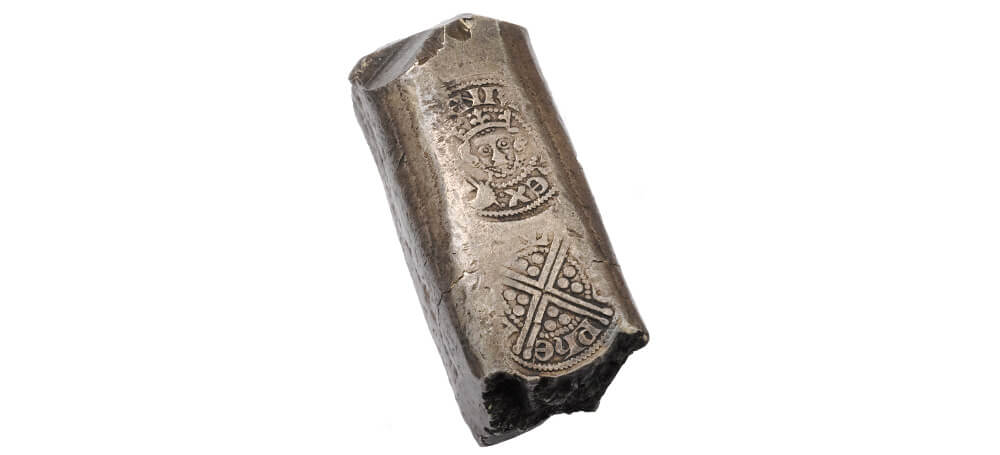Trial plate or ingot
The Royal Mint Museum has the best collection in Britain of gold and silver trial plates, many of them having come from the Pyx Chapel in Westminster Abbey in the 1830s. These plates are in essence thin sheets of metal from which samples could be readily cut for the purpose of conducting comparative assays to check the accuracy of the coinage.

A debate over which is the earliest surviving trial plate has been sustained for many years and it has centred on whether the item illustrated here, a late arrival from the Pyx Chapel in the 1840s, is in fact a trial plate or a piece of silver intended for some other purpose. On the basis of the impressions stamped into the surface it is possible to say that this ingot-shaped piece of silver dates from c.1279 and it is indeed the stamped impressions from coinage dies that immediately suggest a link with trial plates. In its dimensions and overall appearance, however, it is quite different. At over half an inch thick, it is unlike any other trial plate in the collection and the current thinking is that it should be regarded as some form of ingot, the precise function of which has yet to be determined.
